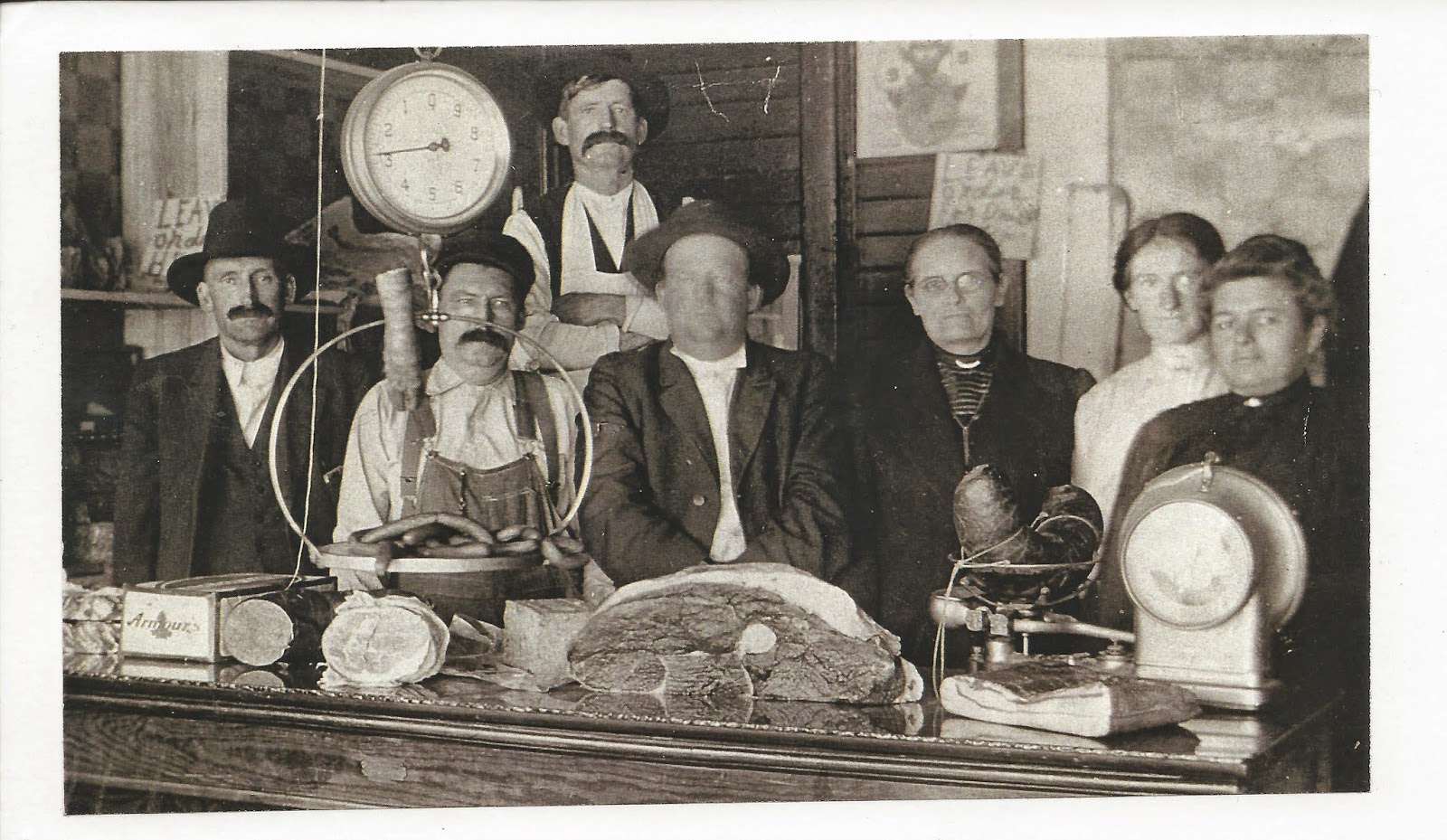The Geary County Historical Society
has a new exhibit: The Whole Hog. This
new exhibit features various tools of the butchering trade, including a few
grisly meat grinders, a rather intimidating meat hook or two and some cleavers
you don’t want to mess with! And as I was going about doing research for this
new exhibit, I was surprised at how little the butchering business has changed
over the past 4,000 years!
In fact, both Ancient Egyptian and
Roman artwork display imagery of butcher shops. The Worshipful Company of
Butchers Guild formed in 975 AD in London, England and still exists today. Both
Ancient Romans and historic Londoners used the same, or similar, techniques and
tools found here in Geary County many hundreds of years later!
When Geary County was first settled, most fresh beef and pork consumed in
Geary County was home-butchered. The
butchering process, particularly for poultry and pork, usually occurred in fall
and winter months. Rather than spend the money to buy feed for the animals
through the long winter months, they were butchered. The cold weather helped keep
the meat fresher than would be possible if they were butchered in the warmer
summer months, and what couldn’t be kept cold was salted and smoked. A family event, every available hand was
involved in the butchering process.
However, by the early 1900s, Junction
City boasted a number of butcher shops and the community choices. Home-butchering was not the only option. In
1911, beef steak was selling for 12 cents a pound and shoppers had a selection
of competitive butchers to buy from. In an advertisement for Bisheimer and
Hartshorn, located at the corner of 14th and Washington, they
declared, “the most appreciated business establishment in the resident district
of a modern city is a well-equipped meat market located conveniently near that
choice meats and other market supplies may be procured promptly when
needed.” Bisheimer and Hartshorn
advertised a “full line of meats, lard and sausage.”
On 515 North Washington, Le Clair
Meat Market featured 1000 square feet, three skilled butchers and a choice of fresh
beef, pork, mutton, poultry and by products. Meanwhile beginning in 1913, the
Steward Poultry Company, under the management of L.C. Stewart, both provided
the community with fresh poultry and purchased surplus poultry from local
farmers.
 |
| 4th Ward Market with the Bryant Family circa 1913 |
In 1911, the 4th Ward
Market was owned by Leonard (Tubby) Bryant and later by A.P. Allen, who changed
the name to Allen’s Food Market. There was no electrical refrigeration when the
Bryants ran the meat market, and there was certainly no walk-in cooler. The
Bryant family had to rely on natural ice to keep the meat fresh. As a result, market-goers had to buy meat the
day they planned to use it. Unless it was salted, the meat would only be fresh
for a day. Certainly a change from the frozen packages of chicken wings available
at grocery stores today!
Stop in to see the Geary County
Historical Society’s new butchering exhibit The
Whole Hog, up now! Open Tuesday-Sunday 1:00-4:00 PM. Interested in
volunteering? Ask us how you can be a part of the fun! gearyhistory@gmail.com

No comments:
Post a Comment